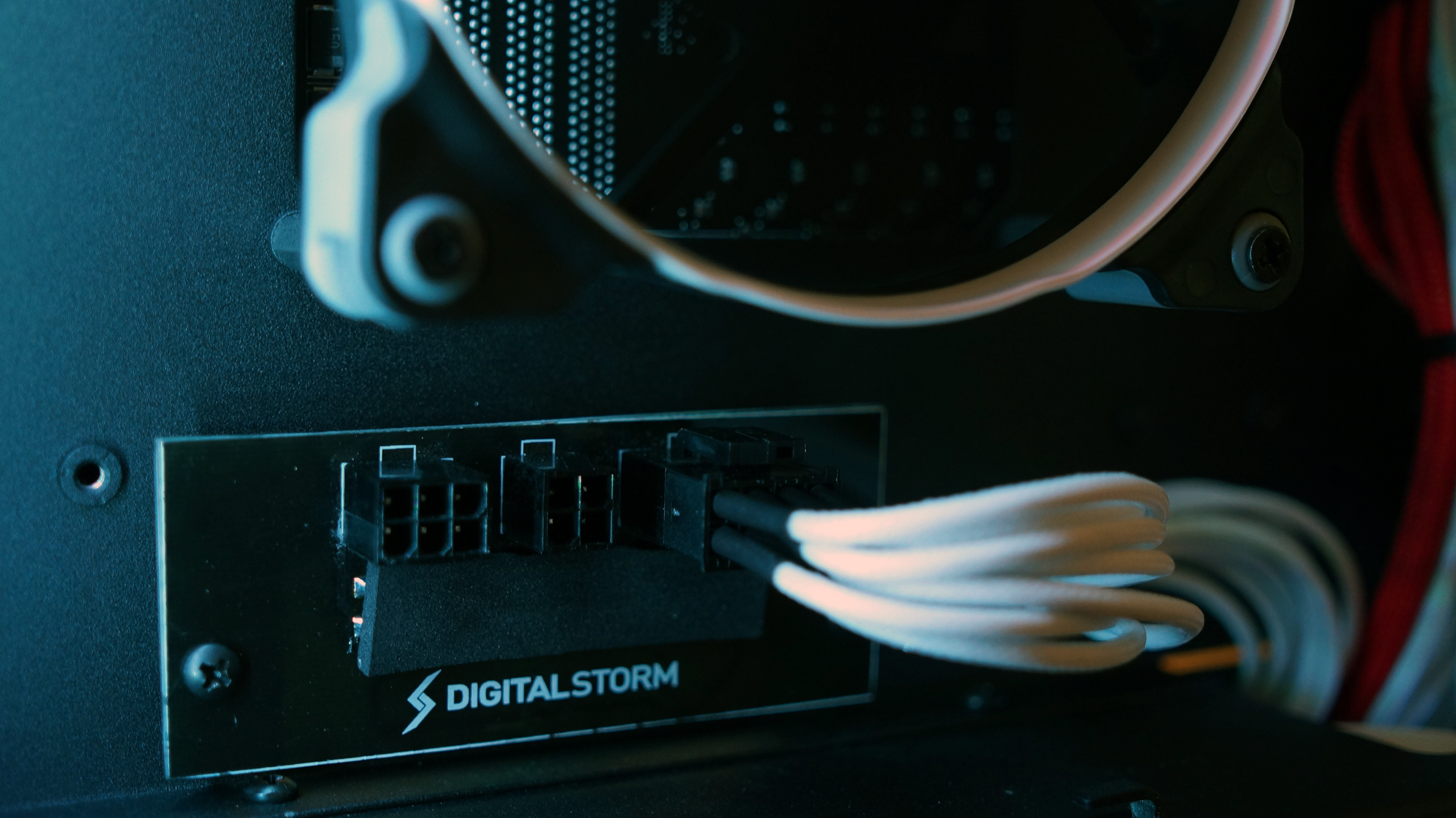Meet the Aventum 3, Digital Storm's new extreme gaming system

When we built the Large Pixel Collider at the end of 2013, we used the biggest, baddest case we could find: Digital Storm’s Aventum II, a towering hulk of metal with intricate water cooling, a giant radiator, and more hard drive bays than most reasonable people would know what to do with. For the past year, Digital Storm has been cooking up the successor to the Aventum II, and we got an early look at it at this year’s CES.
This is the Aventum 3. It’s just as imposing, just as metal, and just as watercooled, but it’s actually a bit more compact than its predecessor. If you’d ever tried moving the LPC, you’d know that was a good thing.
While the Aventum 3 is a recognizable descendant, there are a few immediately noticeable differences. Gone is the faceplate from the front of the chassis, exposing the fans cooling the hard drive cages for greater airflow. The case’s RGB LEDs shine through the grate at the front, which is emblazoned with a big Digital Storm lightning bolt. The front ports (disc drive, USB, audio) have also been moved from their position on the side of the case to the front, which may make them more accessible, depending on your desk setup.
The entire case is smaller, overall, but it’s still a very large full tower. It dominates a room, and you’re still not going to be picking it up and casually carrying it without help (or a handtruck). But it may comfortably fit under a desk that the Aventum II would not.
The more important changes Digital Storm has made are on the inside. Because Digital Storm sells custom-built PCs rather than components, they naturally pre-wire the computers themselves and pretty up the presentation by tying off cables as neatly as possible. New to the Aventum 3 are some tricks to allow PC gamers to tinker with their systems without ruining the presentation. Digital Storm has added custom PCBs on each side of the case where power cables can plug in. Instead of trying to route a cable through a small hole, simply plug it into the PCB on the backside and run another cable out of the front.

Digital Storm has also adjusted its water cooling piping to be easy to remove and reattach. Both improvements should make it easier to add new graphics cards to a pre-built Aventum 3.
The hard drive cages are now much more accessible, and the side fans along the bottom of the chassis now detach on a small panel for more convenient access to the water cooling radiator. Overall, it’s impressive how much cleaner and more spacious the Aventum 3 looks, even though it’s smaller than the Aventum II. This is mighty fine case.
The biggest gaming news, reviews and hardware deals
Keep up to date with the most important stories and the best deals, as picked by the PC Gamer team.
It’s also an expensive one. Digital Storm has a few months of fine-tuning to do before a launch later in the spring, but expect an Aventum 3 build to cost at least $3000. That’s for a beastly PC, of course, likely running a high-end Core i7, at least one Nvidia GTX 980, and at least 16GB of RAM. Of course, there will be even more powerful builds available, with dual- or quad-SLI graphics, an Intel 5960X (which costs $1050 all by itself), and more RAM.
The SLI GTX 980 system with a 5960X I got a look at will cost, ballpark, $6000. That’s in line with what Digital Storm already charges with its Aventum II builds. Based on what I’ve seen, they’ve made a case that not only looks nicer, but will actually allow PC enthusiasts more flexibility to play around with their very own supercomputer.



Wes has been covering games and hardware for more than 10 years, first at tech sites like The Wirecutter and Tested before joining the PC Gamer team in 2014. Wes plays a little bit of everything, but he'll always jump at the chance to cover emulation and Japanese games.
When he's not obsessively optimizing and re-optimizing a tangle of conveyor belts in Satisfactory (it's really becoming a problem), he's probably playing a 20-year-old Final Fantasy or some opaque ASCII roguelike. With a focus on writing and editing features, he seeks out personal stories and in-depth histories from the corners of PC gaming and its niche communities. 50% pizza by volume (deep dish, to be specific).

